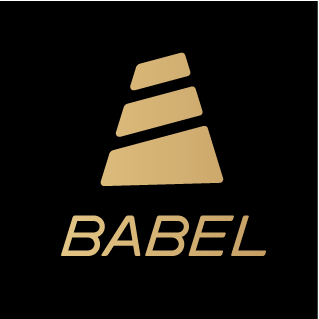This article is an article published on medium by Roy Sheinfeld, an economic analyst and cryptocurrency researcher, and PayPal has authorized the author to translate it. In this article, the author makes a series of comparisons between the Internet and the Lightning Network, and analyzes from the perspectives of technology generation, promotion and use, important nodes and future development directions.
Almost every epistemologist since Aristotle (4th century BC) to Kant (18th century AD) agrees that we learn by classifying and comparing things in the world. But the key to this behavior is not whether they can be compared, but what we can gain from the comparison.
Although the Lightning Network is a significant technology, our understanding of it is still very limited, and some questions still need to be understood: How does the number of LSPs required by the Lightning Network vary with the number of users? How does the complexity of the graph relate to the throughput of the network? What will happen when the Lightning Network is adopted at scale? What would a Bitcoin-based Lightning Economy look like? How will this technology change our markets and society?
We are lucky that another network technology, the Internet, is changing our society, making people more connected, living more efficiently, and providing us with unprecedented opportunities.
secondary title
1 Change starts with an idea
Before comparing the Internet and the Lightning Network, let's describe them conceptually.
Both the Internet and the Lightning Network had conceptual descriptions before they officially appeared. We can thank JCR Licklider for creating the first Internet in 1962 and calling it the "Interplanetary Computer Network". He foresees "a globally interconnected set of computers through which everyone can quickly access data and programs from anywhere." But perhaps contrary to popular belief, the Lightning Network first appeared in the Bitcoin white paper.
The comparison makes sense because Licklider is talking about a network of technicians -- not a tool for a large-scale utility. He described it in terms of compilers, sublanguages, and a time-sharing protocol, "connecting at least four large computers," the hub. What he's describing is network infrastructure, not the Internet that everyone can participate in as we know it. Likewise, although Satoshi Nakamoto explicitly described Bitcoin as "a purely peer-to-peer version of electronic cash that allows online payments...", this is not the case - due to the limitations of the blockchain So far, Bitcoin has been treated more as digital gold (a store of value) than P2P cash as it should have been.
secondary title
2 From experts to the general public: the promotion of the use of two networks
In the decades since Licklider published his first paper, many people and institutions have been working hard to translate his ideas into practical technology.
The first wide area network went live in 1965, and the first host-to-host messages appeared four years later. Crucially, the Internet's basic transport protocol, TCP/IP, was tested in 1975 and adopted as a DARPA standard in 1980, and the amount of Internet infrastructure continued to grow.
Despite this, not many people are actually using the Internet. Its users are really limited to developers, researchers, technicians, experts. There are two reasons for this:
1. Most of the communication between these partners is through RFCs, which are memos related to the operation of the network itself, usually shared with FTP. This is far from the technology that can touch and use APP on mobile phones now.
image description

(Source: U.S. Census Bureau)
This is similar to the situation with the Lightning Network today. But why: Even though smartphones are much more ubiquitous than computers were in the early 1980s, it is still impossible to run a full Lightning Network node? However, computers have overcome the TCP/IP hurdle within a few years, so why not increase the transaction speed of full nodes?
Likewise, imagine we live in a "lightning community" the size of a small town. Many of us know each other and discuss Lightning on expert channels like GitHub, which are really just another form of RFC message board.
secondary title
3 Find the killer feature and improve user understanding
In the early 1990s, Tim Berners-Lee developed and published HTML, the first step in the popularization of the Internet. This transformed the Internet from a text-based medium to an open medium. HTML is one of the important components of the Internet.
In addition to HTML, Berners-Lee and Nicola Pellow were simultaneously developing the internet's killer app: the web browser. The advent of the web browser lowered the barrier to entry for everyone. It is a point-and-click interface that allows users to participate without having to understand the underlying protocol. Instead of FTPing datasets and protocol drafts, experts can order pizza from a clickable interface on their computer.
image description

(Source: U.S. Census Bureau and World Bank)
So, what is the killer feature of Lightning Network? The Lightning Network is a payment network based on Bitcoin. Therefore, its killer app must be able to make Bitcoin transaction fees lower, easier to operate, faster, and more intuitive to use without compromising its technical integrity. That means a seamless user experience and a private, peer-to-peer, secure, decentralized, true-to-Bitcoin foundation. We have already taken a huge step on this path.

Two killer apps are still in their infancy. "If I have seen further, it is by standing on the shoulders of giants." (Source: Wikipedia)
Another similarity is the rise of service providers. From the 1980s to the 1990s, ISPs evolved from a basic email exchange to an accessible platform offering a range of services. Now, we’re also seeing the rise of Lightning service providers offering a range of services to help users connect with each other.
So where does mass adoption go?
Perhaps what is missing is a phenomenal use case to cause a geometric network effect. I mean, of course everybody already has to transact and transfer money, and there's already a nice, user-friendly application. But the Lightning Network is still unfamiliar to everyone. These news-killer use cases may come from the Lightning Network’s current add-ons, morphing into major use cases with broad appeal, such as private messaging. It could come from microeconomic decisions by global retailers, or it could come from macroeconomic shocks that exacerbate the salience of Bitcoin’s dominance.
secondary title
4 People-centric, improve user engagement
Another big change dates back to 2006. That was the year Google bought YouTube and made it a regular web app, Facebook opened membership to adults and teens around the world, and Time magazine declared "You" Person of the Year. The Web has officially entered a development period, which is what we called the Web 2.0 era at the time.

I don't know what makes me feel old. Saying "Web 2.0" or referring to the era when print media was relevant to culture. (Source: Wikipedia)
The Lightning Network can also facilitate a person-centric economy. In this way, all payments in life can be P2P, crowdfunding can replace investment banks, and inflation will no longer devalue public debt and private savings. Individuals may have different amounts of Bitcoin at their disposal, but there will be no difference in the quality of their economic participation. Everyone is on a level playing field, and everyone can use the same equipment to play.
As important as Web 2.0 was, smartphones went mainstream in 2006, with the ubiquitous Blackberry, the popular Nokia and the upcoming iPhone. Since 2006, the Internet has become ubiquitous, and the masses are involved. It is not just a network program, but an integral part of people's real life.
image description

(Source: Canadian Banknote Museum Online)
image description

(Source: Evan Bench)
The same lady - Queen Elizabeth, the three banknotes span 65 years. The same is true for much of the rest of the Commonwealth. In other words, nearly a third of the world's population can't remember what money looks like if they can't see the Queen's face. For a population of 2.25 billion and three generations, Queen Elizabeth has been synonymous with banknotes, and it would feel odd not to have her likeness in a purse.
secondary title
5 summary
By comparing the development of the Lightning Network with the history of the Internet, it can be seen that:
1. The Lightning Network has come a long way in realizing Satoshi Nakamoto's vision for Bitcoin.
2. The focus has shifted from purely technical possibilities to user experience optimization.
3. We are still waiting for phenomenal applications or phenomenal use cases to cause geometric network effects. Both positive and negative shocks are plausible catalysts.
Original link:
Original link:



